The frenzy generated all around the world by the rapid development of robotics and artificial intelligence (AI) has raised the question. Will Robots Replace Humans? Advanced robotics was something of a science fiction fantasy before their advent into real industries, workplaces, and even everyday life. This blog goes into detail about the prospects, the tribulations, and the moral quandaries of a world with humans and robots while pondering the possibility of either being a threat or a tool toward progress in the everyday course of human life.
The Evolution of Robotics
1. Early Beginnings
Robotics traces its roots back to ancient times, with mechanical automata created to mimic simple tasks. Jumping forward to the 20th century, with the invention of industrial robots like Unimate, changed manufacturing forever by automating repetitive tasks on assembly lines.
2. The Age of AI-Powered Robots
These days, modern robots perform beyond manual activities; by the power of AI, it learns, adapts, and even makes decisions. From self-driving cars to humanoid robots, advances in machine learning, natural language processing, and computer vision are taking robotic development beyond what was thought possible.
Industries Where Robots Are Replacing Humans
1. Manufacturing
Robots are a part of the manufacturing process, handling duties like welding, assembling, and painting with unmatched speed and precision.

Impact:
- Higher efficiency and lower production costs.
- Job displacement in low-skill positions.
Example:
Automotive factories now employ robotic arms for intricate assembly work.
2. Healthcare
Robots are changing healthcare, from surgical robots like da Vinci to AI diagnostics.
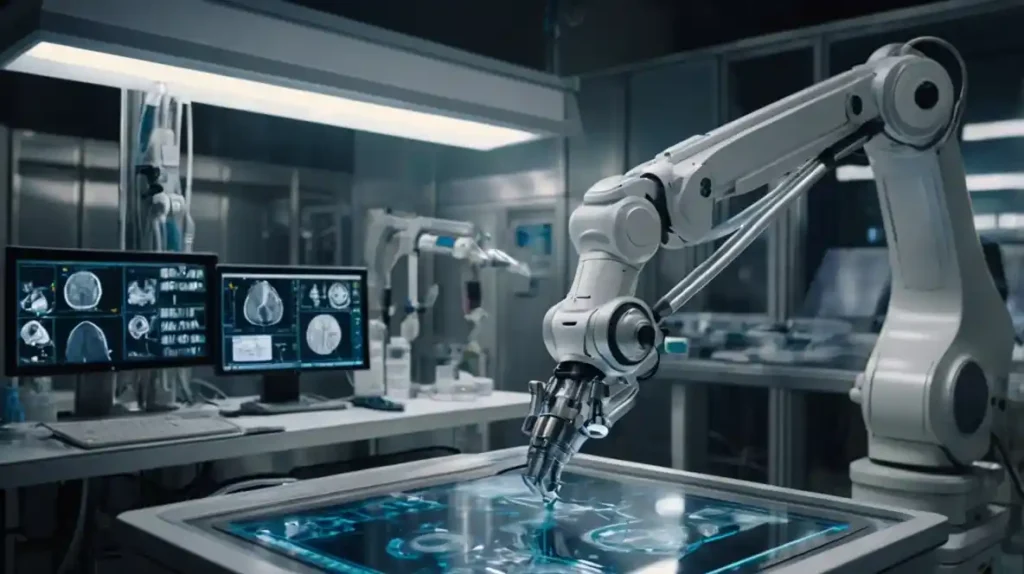
Advantages:
- Their accuracy in surgeries.
- Workload burden reduced on healthcare professionals.
Concerns:
Ethical dilemmas in critical life-and-death decisions pinned to robots.
3. Retail and Customer Service
Automation is revolutionizing operations in the retail and hospitality sectors. Robots can be found restocking shelves and working behind counters.

Examples:
- Checkout lanes are being replaced by automated kiosks.
- Pepper and other robots assist consumers with inquiries.
4. Agriculture
The Future of Agriculture: Autonomous Tractors, Crop Monitoring through Drones, and Robotic Harvesters

Advantages:
- Increased productivity at lower labor costs.
- More accurate use of resources for less waste.
5. Transportation
Self-driving cars and drones will completely alter transportation and logistics.
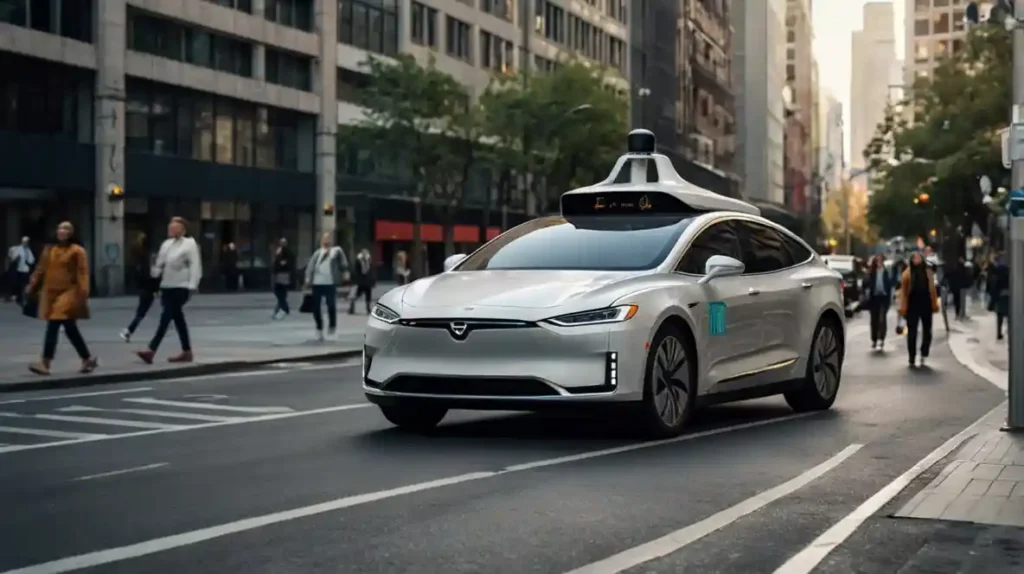
Current Applications:
- Delivery robots like Amazon Scout;
- Trucking for long-haul cargo.
Will Robots Replace Humans Completely?
There’s so much controversy over the idea of whether robots would entirely replace humans. Robots might outdo humans at certain jobs but never match human creativity, emotional understanding, or ethical thinking. This is a clear distinction on which aspect the robots can and cannot surpass humans:
1. What Robots Do Better:
- Repetitive jobs: Robots are excellent for dull, precision-intensive jobs, like in manufacturing.
- Dangerous Jobs: Robots can do dangerous tasks, such as bomb disposal or deep-sea exploration, without risking human lives.
- Data Processing: AI-powered systems analyze massive datasets far faster than humans.
2. Where Humans Excel:
- Creativity: Robots cannot replicate human ingenuity in arts, innovation, or problem-solving.
- Job-specific characteristics: Jobs requiring empathy like counseling or caregiving would be beyond a robot’s abilities.
- Ethical Judgment: Humans bring moral reasoning to decisions, an area where robots really fall short.
Challenges and Concerns of Robot Integration
1. Job Displacement
As robots take over routine tasks, concerns about widespread unemployment are rising.
Impact:
- The most vulnerable are blue-collar workers in manufacturing and logistics.
- White-collar jobs in areas such as accounting and legal research are also exposed to risk.
2. Ethical Dilemmas
But with rising robot dependency comes ethical questions:
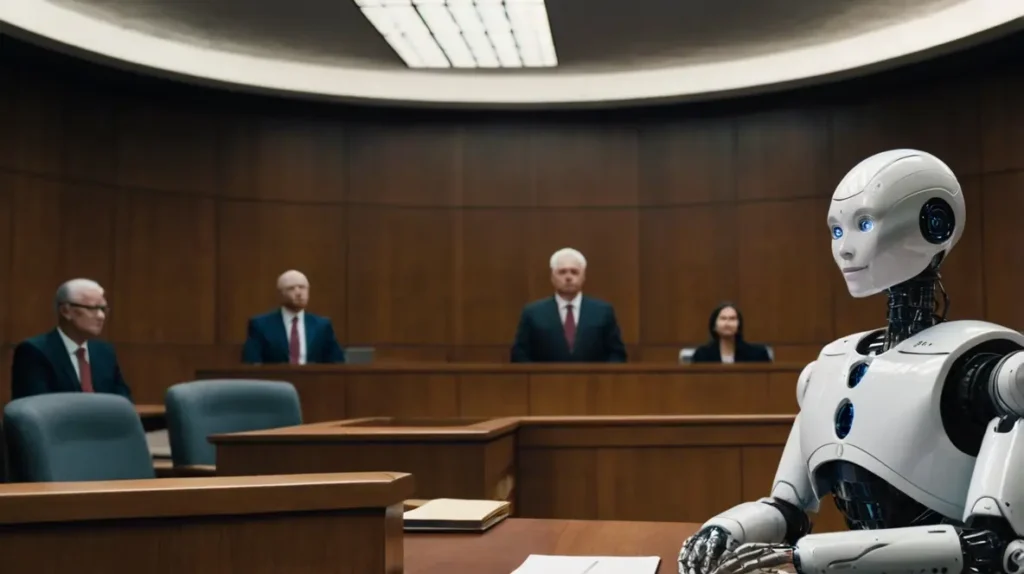
Key Issues:
- Should robots have the authority to make critical decisions, such as in healthcare?
- How do we address biases in AI algorithms that control robots?
3. Dependency on Technology
Over-reliance on robots may lead to system failure or cyberattacks on them. Therefore, robust cybersecurity in robotic systems becomes very important.

4. Loss of Human Connection
Automation in customer service and caregiving may lead to human interaction erosion, thus harming mental well-being and society’s bonding.
Benefits of Robots in the Workforce

1. Increased Productivity
Robots work without getting tired, thus increasing efficiency and productivity in manufacturing to logistics.
2. Improved Safety
In hazardous environments, robots reduce the risk of injury by handling dangerous tasks like mining or firefighting.
3. Cost Savings
Though they are costly initially, robots can save money in the long run by reducing labor costs and minimizing errors.
4. Enhanced Precision
Robots are excellent for high precision, like precision manufacturing or surgery.
Balancing Humans and Robots: The Future of Work
The future lies in collaboration, where humans and robots work together to achieve more than either could alone. This concept, known as cobotics, emphasizes partnership rather than replacement.
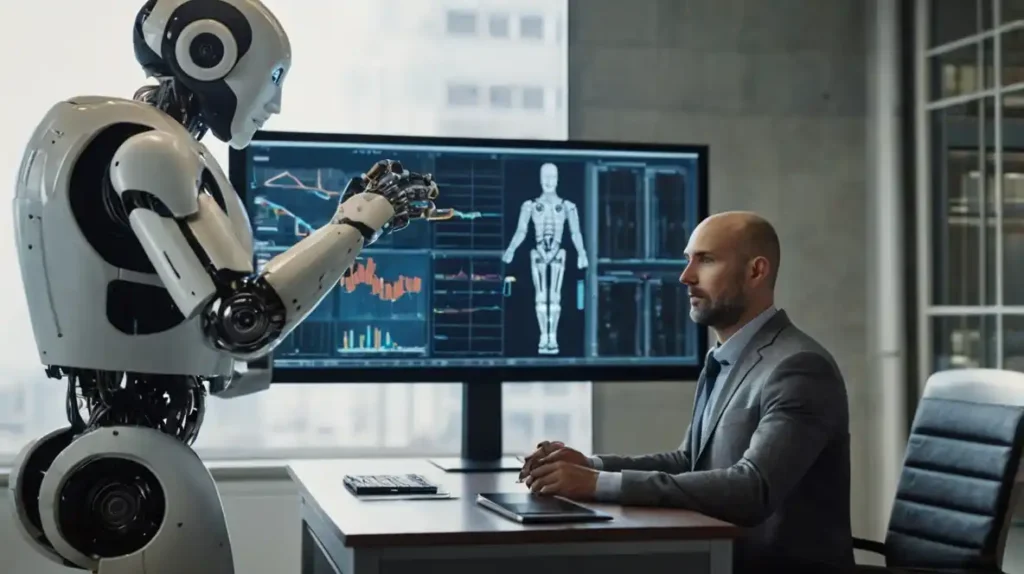
Examples of Human-Robot Collaboration:
- Manufacturing: Robots perform repetitive work, and humans focus on quality control and solving complex problems.
- Health Care: Surgical robots aid doctors, increasing their accuracy without replacing them.
- Retail: Inventory is done by robots while employees focus on customer service
Industries Reshaping Themselves with Robots
1. Education and Training
Robots are increasingly integrated into the learning process as teaching assistants or training aids.
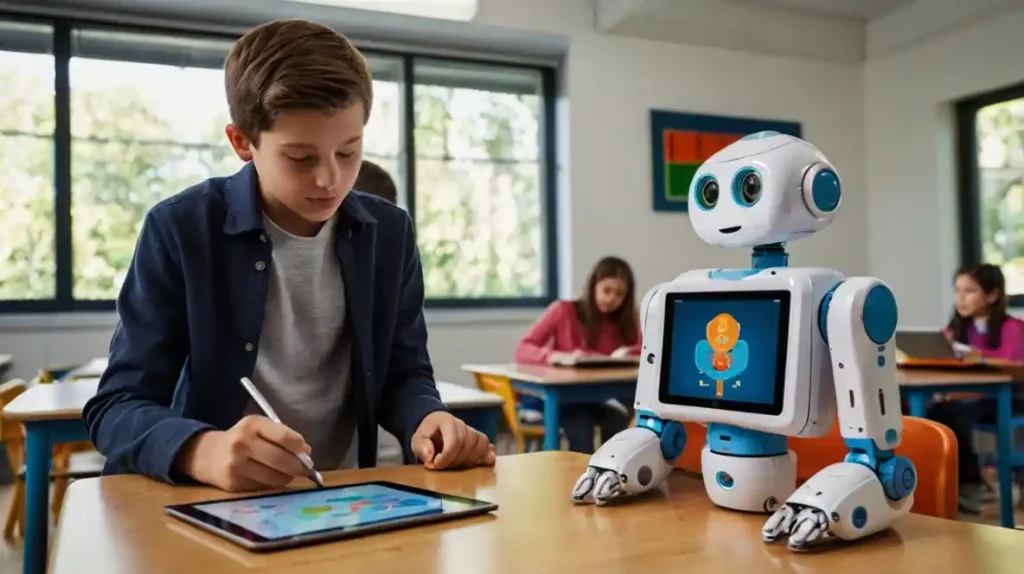
Example:
Robots like NAO assist in teaching coding and STEM skills to students.
2. Entertainment
The entertainment industry also employs robots for special effects, performances, and even robotic actors.

Example:
Disney’s animatronics bring characters to life in theme parks.
3. Space Exploration
Robots are vital tools for space missions as some tasks are too dangerous or cannot be done by humans.
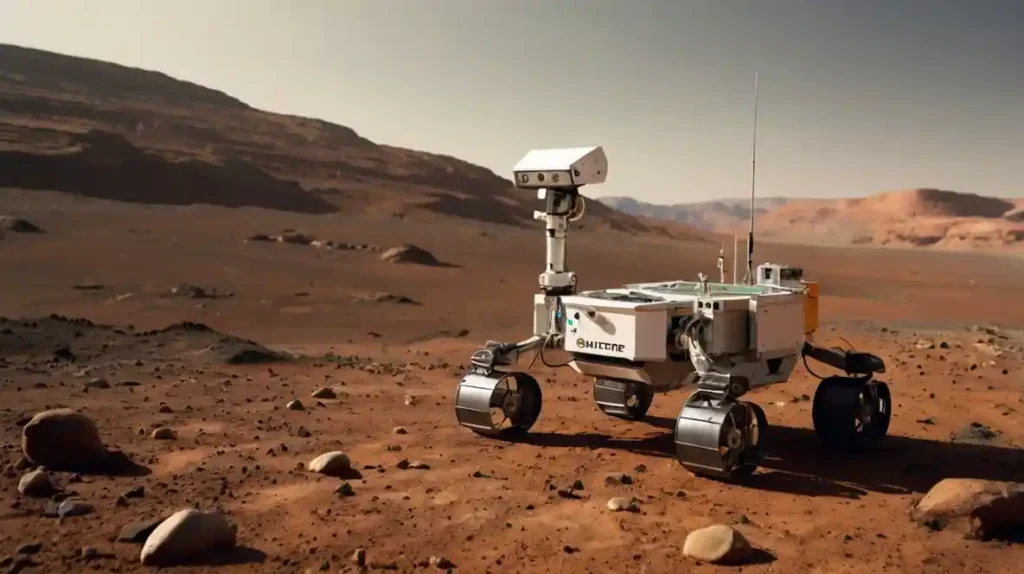
Example:
NASA is sending its Perseverance rover to Mars to acquire samples for future missions.
Ethical Considerations: Can Robots Replace Human Judgment?
1. Responsibility and Accountability
Who is liable for the error of a bot? Developers, manufacturers, and users all share the burden.
2. Autonomy and Control
As robots become more advanced, ensuring humans retain control is critical to prevent unintended consequences.
3. Bias in AI
AI robots can end up inheriting biases from their training data, hence perpetuating less-than-fair consequences in hiring or law enforcement.
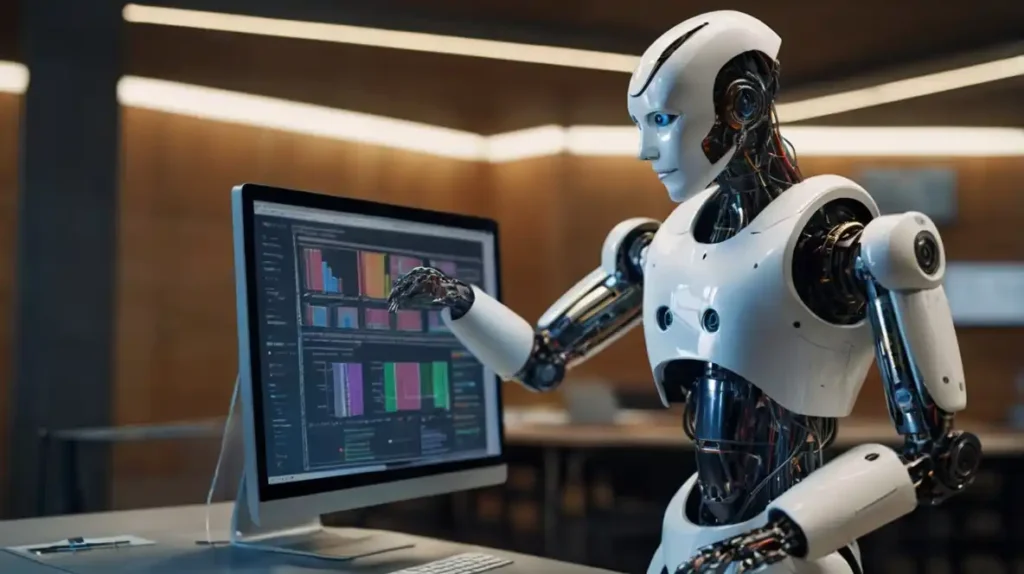
Preparing for a Future with Robots
1. Upskilling and Reskilling
Workers must be equipped with skills in robotics programming, AI, and data analysis to remain relevant.
2. Emphasizing Human Strengths
The jobs that require creativity, empathy, and ethical judgment will prove essential in a robot-dominated world.
3. Ethical Regulations
Governments and organizations need to set standards in place to ensure that robots are developed and deployed ethically.
Case Studies: Robots Transforming Industries
1. Amazon’s Robotic Warehouses
Amazon deploys thousands of robots in its warehouses to reduce delivery time and related costs.
2. Boston Dynamics in Construction
Boston Dynamics robots, with Spot one of them, have been sent to building construction to inspect and transport materials.
3. Tesla’s Autopilot System
This has been an example of how robots revolutionize transportation though it has also raised questions on safety and ethics.
The Verdict: Will Robots Replace Humans?

While robots are certainly going to alter the way we live and work, it is very unlikely that they are going to replace humans in their totality. They will simply augment human abilities, helping us focus on creative activities, empathies, and ethical reasoning.
It lies in embracing the promises of robots while confronting their problems. By encouraging teamwork and ethical practices, humankind and robots can come together and thrive in this future shared world.
So, should robots replace humans? The answer is a grey area: it’s finding the right balance to play to both strengths.
Macrotechy offers up-to-date tech news and practical solutions, making technology simple and accessible for everyone.
